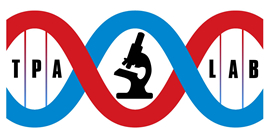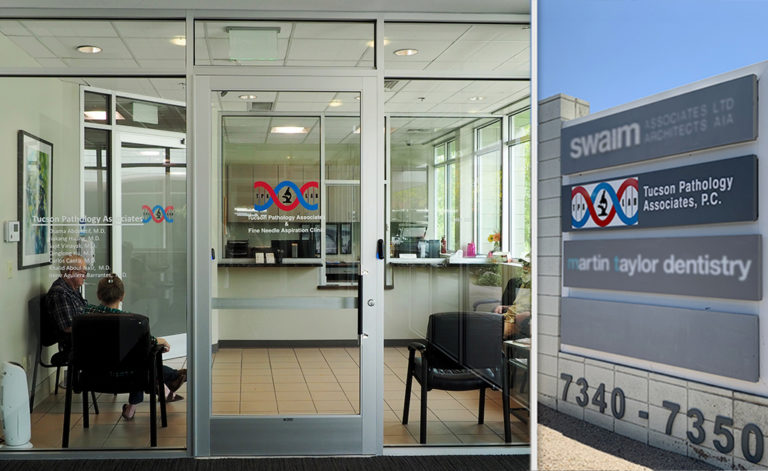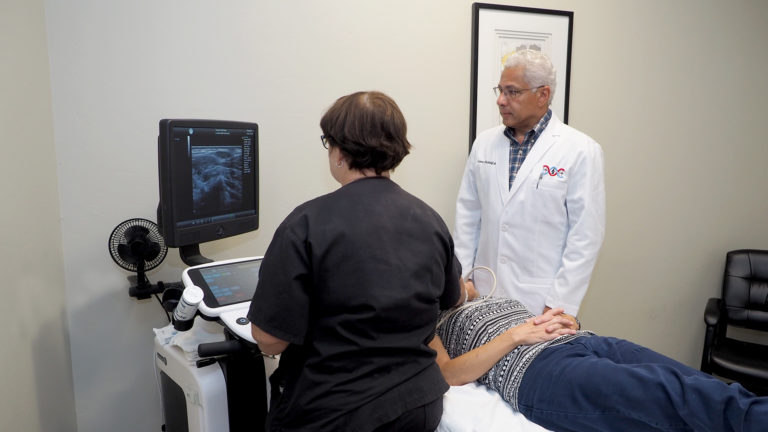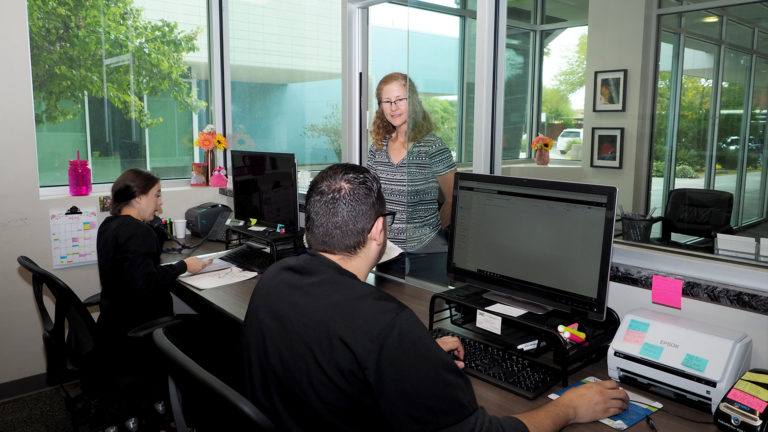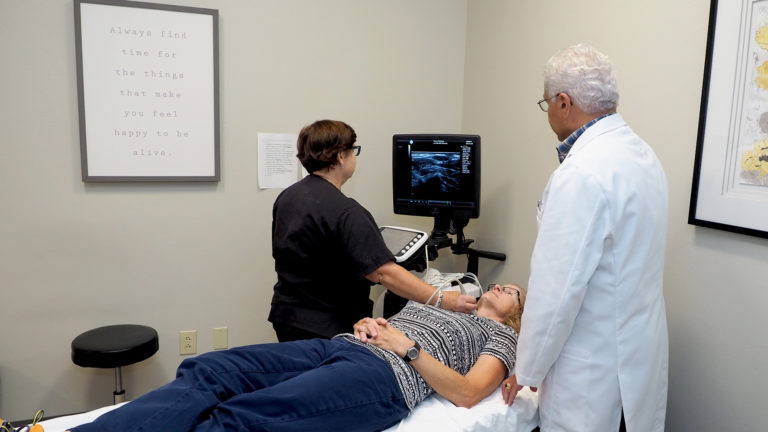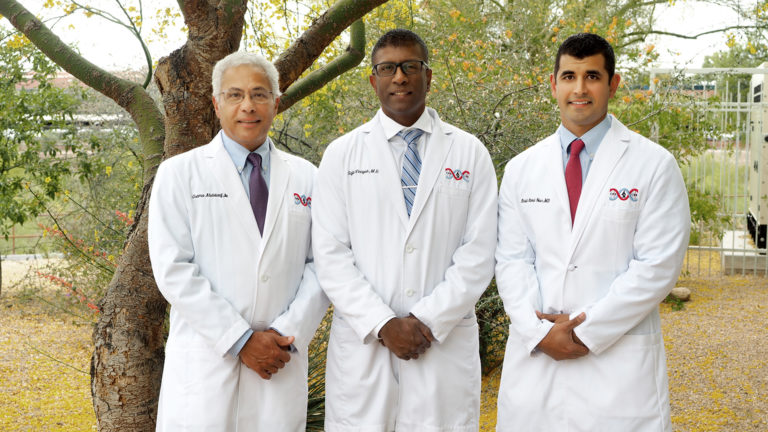Ultrasound Guided Biopsies
Almost all biopsies of suspicious masses used to be examined by open surgical biopsies. In the past, the only way to do this was to have you go to the hospital and undergo a surgical procedure that may be painful, might cause scarring, had more complications, and involved a longer period of anxiety while waiting for the results. Now less invasive options are available. Fine needle aspiration biopsy (FNAB) is now frequently used to obtain tissue diagnosis. FNAB entails placing a very thin needle inside the mass or lesion and extracting cells for microscopic evaluation. The procedure itself takes only seconds and the discomfort is comparable to a blood draw. In order to make FNAB reliable, it is important that the sampling, as well as the interpretation of the specimens, are done by specially trained physicians who do the procedure frequently. In our clinic, board certified specialty trained cytopathologists perform and interpret the fine needle aspiration biopsy limiting the chances of a non-diagnostic FNAB.
The advantage of having your procedure performed by our board certified cytopathologist, is that you will know your results before you leave the clinic and this will reduce your risk of having to repeat the procedure.
What is a Fine Needle Aspiration biopsy (FNA)?
Your health care provider has referred you to our clinic for a Fine Needle Aspiration biopsy (FNAB). This is because you or your doctor has discovered a lump/lesion and wants to determine what that lump or lesion is. With the use of FNA, we can now sample your lump or lesion using only a thin small needle which at best may leave a mark no bigger than a needle stick. Furthermore, this test will most often allow us to make a diagnosis of your lump immediately or within 1 to 2 days of the biopsy if special studies are needed.
How is the biopsy performed?
First, the doctor will ask you some questions about the lump or the lesion: where it is, how and when you first became aware of it, did you have any ultrasound exam or any other imaging of the lump/lesion and if you’ve noticed any changes in it. Next, the doctor will feel the lump if it is palpable or perform ultrasound exam if it is not palpable. Before the actual biopsy is performed, the doctor will give you an opportunity to ask any questions or express any concerns you might have about the procedure. After all your questions and concerns have been addressed, the actual procedure will begin.
If the lump/lesion is palpable, the Cytopathologist will localize the lump/lesion with one hand then precisely sample the lump/lesion with a thin needle held in a needle holder, which provides greater control.
If the lump/lesion is not palpable, the Cytopathologist will perform the biopsy under ultrasound guidance also using a thin needle held in a needle holder for greater control. Usually, 2 to 3 samples will be required from the lump to provide an adequate sample for accurate diagnosis. During the procedure, the doctor will usually leave the examination room with one of the slides to check that there is enough tissue to prevent the need for a second office visit.
When and how will I get my results?
Generally, after the cytopathologist is done with the FNAB, he/she will discuss the results with you immediately after the procedure is done. Before you leave our FNA clinic, the cytopathologist will give you your results. In rare cases if more studies are needed, then the final results will be sent to your surgeon or primary care provider’s office in 2 to 3 working days.
How reliable is this test?
In the hands of our skilled board certified fine needle aspiration biopsy cytopathologist, this test is very reliable. In the instance of a clearly benign diagnosis, it may prevent you from undergoing surgery. In the case of a clearly malignant diagnosis, it quickly establishes the need for further treatment. In the very rare occurrence of an indeterminate diagnosis, either repetition of the FNAB or a surgical biopsy is usually recommended.
What complications may arise?
Fine Needle Aspiration Biopsy, when carried out by an experienced practitioner, is virtually free of significant complications. It is almost painless and does not require the use of any anesthesia. The most common complication is a slight bruising or tenderness of the area following the procedure. Discomfort should be relieved by an over-the-counter pain reliever such as Tylenol, or the application of an ice-pack for short periods following your return home.
IMPORTANT!
If you experience swelling that doesn’t go away, continued bleeding, a fever over 100′ F, or if you experience pain that is not helped by Tylenol or other non-aspirin products, call your doctor’s office immediately.
